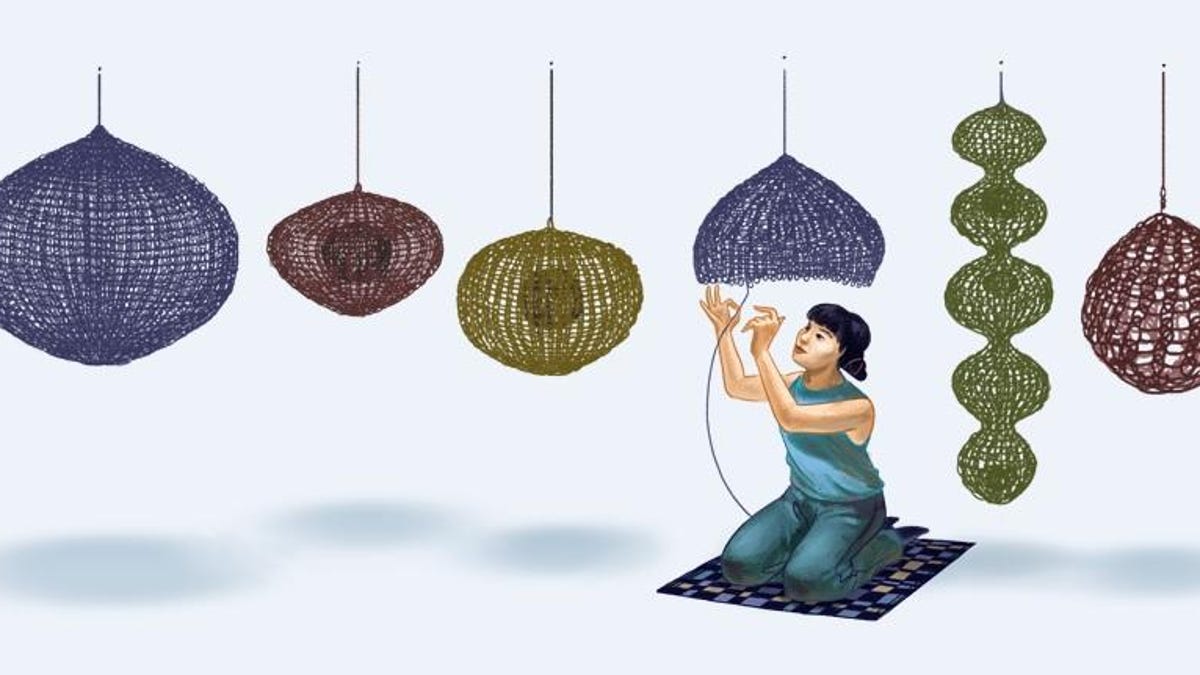Google Doodle celebrates Japanese-American artist Ruth Asawa
She overcame World War II discrimination to become a renowned sculptor and advocate for art's transformative power.

Ruth Asawa created sculptures by weaving galvanized wire.
May is Asian/Pacific American Heritage Month, which celebrates the culture, traditions and history of Asians and Pacific Islanders in the US.
To kick off the celebration, Google dedicated its Doodle on Wednesday to Ruth Asawa, a Japanese-American artist who overcame discrimination during World War II to become a nationally renowned sculptor of wire forms and an arts educator who believed "art will make people better."
For almost as long as Google has been around, it's livened up its barebones search page with artwork that draws attention to notable people, events, holidays and anniversaries. Google Doodles have celebrated, among many other things, Pac-Man's anniversary, Copernicus' birthday, Mother's Day and the World Cup, as well as reminding us of lesser-known real-world heroes.
Asawa was born in the Southern California city of Norwalk in 1926 to Japanese immigrants who worked on farms. As a young child, Asawa showed a keen interest in art, and as a teenager won first prize at a 1939 arts competition for her artwork on what makes someone an American.
But at the onset of US involvement in WWII, Asawa and her family were forcibly relocated to internment centers for Japanese living on the West Coast of the US. During her internment, she continued to study art, and following her graduation from an internment center's high school, she attended the Milwaukee State Teachers College, as ethnic Japanese were prohibited from attending college in California.
She had intended to become an art teacher, but because she couldn't get hired to perform required practice teaching due to her Japanese heritage, she left Wisconsin without a degree and transferred to the experimental Black Mountain College in North Carolina.
It was during a visit to Mexico before her final year in Wisconsin that she was exposed to baskets made from galvanized wire by villagers. Drawing on the construction methods, she began to experiment with crocheted wire sculptures.
Resembling weaving, her sculptures brought her prominence in the 1950s for their lightness and transparency. Her work appeared at exhibitions at the Whitney Museum of American Art and the 1955 Sao Paulo Art Biennial.
In 1962, Asawa began experimenting with sculptures based on nature that became increasingly geometric and abstract.
"My curiosity was aroused by the idea of giving structural form to the images in my drawings," she said. "These forms come from observing plants, the spiral shell of a snail, seeing light through insect wings, watching spiders repair their webs in the early morning, and seeing the sun through the droplets of water suspended from the tips of pine needles while watering my garden."
As her reputation grew, so did her opportunities for public commissions, especially fountains, for which she became known in San Francisco as the "fountain lady." For one fountain near San Francisco's Union Square, she encouraged 200 schoolchildren to mold hundreds of images of the city in dough, which were then cast in iron.
She also designed the Japanese-American Internment Memorial Sculpture in San Jose, California, in 1994, and the Garden of Remembrance at San Francisco State University.
Asawa was also a passionate advocate for arts education, championing its transformative and empowering qualities. "Art will make people better, more highly skilled in thinking and improving whatever business one goes into, or whatever occupation. It makes a person broader," she said.
She was the driving force behind the creation of the San Francisco School of the Arts, which was renamed the Ruth Asawa San Francisco School of the Arts in her honor in 2010.
She died at her San Francisco home in 2013 at the age of 87.

